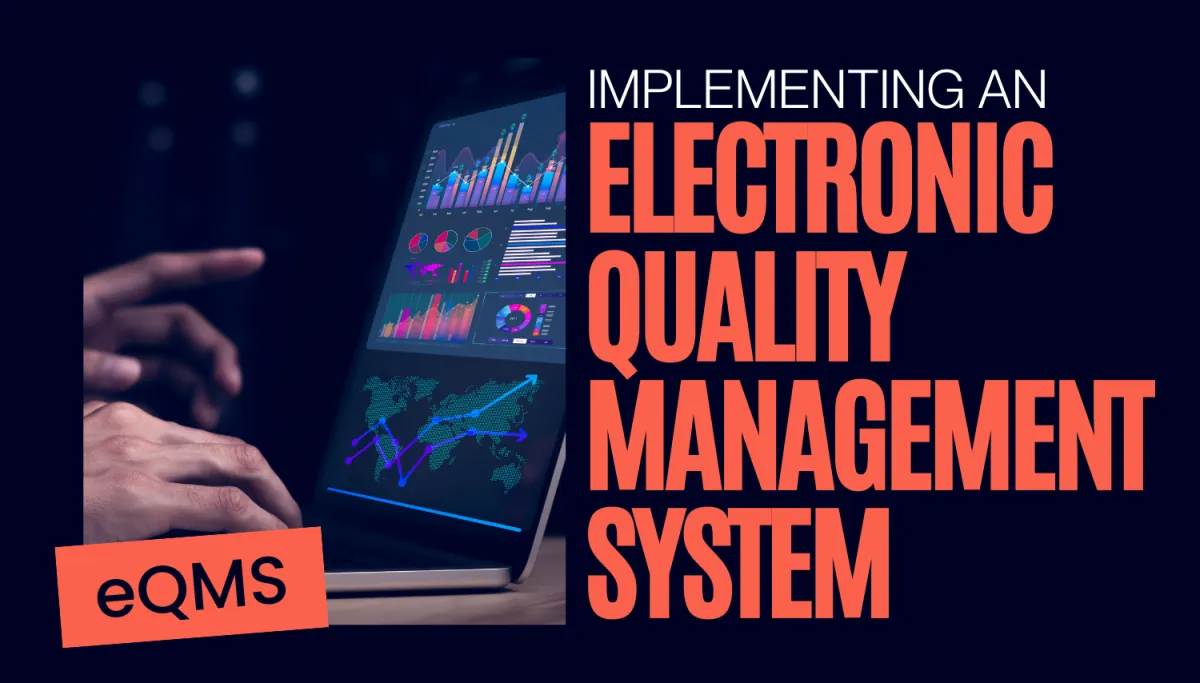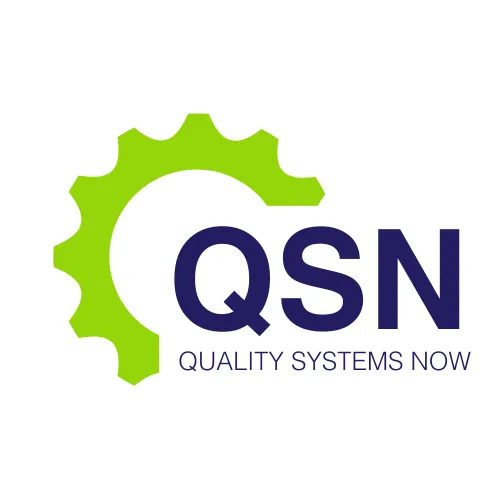LATEST NEWS

Implementing an Electronic Quality Management System (eQMS)
The implementation of an Electronic Quality Management System (eQMS) is a critical endeavor for organizations aiming to enhance their quality management processes. An eQMS streamlines the management of quality documents, processes, and compliance activities, thereby improving efficiency and ensuring regulatory compliance. Today we discuss the comprehensive steps involved in eQMS implementation, including the development of User Requirement Specifications (URS), software selection support, data preparation, project strategy, cutover activities, validation and testing, training, and post-implementation management.
Do You need eQMS implemented in your organisation? Talk to us to find out more.
User Requirement Specifications (URS) Development
The development of User Requirement Specifications (URS) is the foundational step in eQMS implementation. URS documents define the functional and non-functional requirements that the eQMS must meet. This includes specifying user needs, regulatory requirements, system performance criteria, and integration capabilities. A well-drafted URS ensures that the selected eQMS aligns with organizational goals and compliance standards.
To develop an effective URS, stakeholders from various departments should be involved to gather comprehensive requirements. This process typically includes:
Requirement Gathering: Conducting workshops and interviews with key stakeholders to understand their needs and expectations from the eQMS.
Documentation: Translating these needs into detailed requirements, categorizing them into functional (e.g., document control, training management) and non-functional (e.g., system performance, security) specifications.
Validation: Reviewing and validating the URS with stakeholders to ensure completeness and accuracy.
Support to Select the Right Software Solution
Selecting the right eQMS software solution is crucial for successful implementation. The selection process should be guided by the URS to ensure that the chosen solution meets all defined requirements. Key steps in the software selection process include:
Market Research: Identifying potential eQMS vendors and solutions that align with the URS.
Vendor Evaluation: Assessing vendors based on their ability to meet functional and non-functional requirements, cost, scalability, and customer support.
Demonstrations and Trials: Requesting product demonstrations and conducting trials to evaluate the usability and functionality of the software.
Reference Checks: Contacting existing customers of the vendors to gather feedback on their experiences and satisfaction levels.
Decision Making: Scoring and ranking the vendors based on predefined criteria, and selecting the solution that best fits the organization's needs.
Preparing Existing QMS Documents for Transfer
The transition from a traditional Quality Management System (QMS) to an eQMS involves significant data preparation. This includes data cleansing, process and procedure modifications, and managing document numbering changes.
Data Cleansing: Ensuring that all existing QMS documents are up-to-date, accurate, and free of redundant or obsolete information.
Process and Procedure Changes: Adapting current processes and procedures to fit the workflows of the new eQMS. This may involve re-engineering certain processes to leverage the automation capabilities of the eQMS.
Document Numbering Changes: Updating document numbering schemes to align with the eQMS's document control capabilities. This ensures consistency and traceability within the system.
Project Strategy for Implementation
A well-defined project strategy is essential for successful eQMS implementation. The strategy should include:
Project Planning: Establishing a detailed project plan with timelines, milestones, resource allocation, and risk management strategies.
Stakeholder Engagement: Identifying and engaging key stakeholders throughout the project to ensure their needs are met and to facilitate change management.
Phased Approach: Implementing the eQMS in phases to manage risk and ensure a smooth transition. This may involve pilot testing in one department before full-scale implementation.
Cutover Activities During Business as Usual
Cutover activities are critical to ensure a seamless transition from the old QMS to the eQMS while maintaining business continuity. Key activities include:
Data Migration: Transferring all relevant QMS data to the new eQMS, ensuring data integrity and accuracy.
System Configuration: Configuring the eQMS according to the URS and organizational needs.
Parallel Run: Running the old QMS and eQMS in parallel for a specified period to ensure the new system operates correctly and to identify any issues.
Support for Validation and User Acceptance Testing
Validation and User Acceptance Testing (UAT) are crucial steps to ensure the eQMS meets all regulatory requirements and user expectations.
Validation Plan: Developing a validation plan that outlines the objectives, scope, and methodology for validating the eQMS.
Execution: Conducting validation activities, including Installation Qualification (IQ), Operational Qualification (OQ), and Performance Qualification (PQ).
UAT: Engaging end-users to test the eQMS in real-world scenarios to confirm it meets their needs and expectations. Gathering and addressing feedback is essential to fine-tune the system.
Training Support for Go-Live
Effective training is critical for a smooth go-live. Training should be comprehensive and tailored to different user groups.
Training Plan: Developing a training plan that includes objectives, schedules, and training materials.
Training Delivery: Conducting training sessions for all users, focusing on system functionality, new workflows, and best practices.
Support Materials: Providing users with manuals, quick reference guides, and online resources to support ongoing learning.
Managing Go-Live and Post-Go-Live
Managing the go-live and post-go-live phases requires careful planning and support to ensure a successful transition.
Go-Live Support: Establishing a support team to assist users during the go-live phase, addressing any issues that arise promptly.
Post-Go-Live Monitoring: Continuously monitoring the eQMS to identify and resolve any post-implementation issues.
Continuous Improvement: Gathering user feedback and making necessary adjustments to optimize system performance and user satisfaction.
Implementing an eQMS is a complex but rewarding process that enhances the efficiency and compliance of quality management activities. By following a structured approach—starting with the development of URS, selecting the right software, preparing existing data, planning and executing cutover activities, and providing comprehensive training and support—organizations can ensure a successful transition to an eQMS. Post-implementation, continuous monitoring and improvement are essential to fully realize the benefits of the new system. Through diligent planning and execution, an eQMS can significantly improve quality management processes, ensuring regulatory compliance and enhancing overall organizational performance. Let's talk about it.
